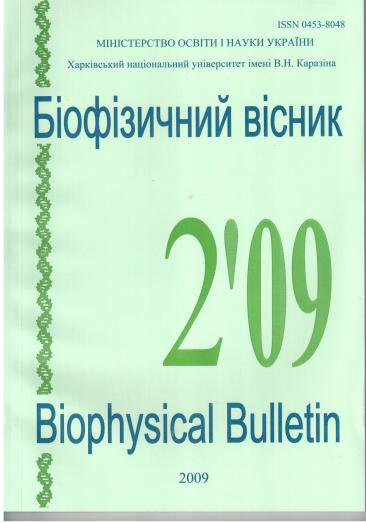Exposure of stellate ganglion to infrared laser
Abstract
This work was dedicated to study of change of capillary blood flow from exposure of the stellate ganglion to the infrared laser irradiation. There were used a pulsed laser that emits at wavelength 0,87 μm (impulse power 10, 30, 60 W; frequency 150, 1500, 3000 Hz, time impulse 80-95 ns) and a continuous wave laser that emits at wavelength 0,83μm (power 25, 50, 100 mW). The signal was registered by a two-wave detector and a pulseoximeter-spectrophotometer of original design. It was explored, that exposure of the stellate ganglion to the laser irradiation decreased transmission light, which indicates increase of finger blood flow at almost healthy volunteers. Maximal effect was observed from exposure of impulse irradiation power 60 W and frequency 3000 Hz.
Downloads
References
Крюк А.С., Мостовников В.А., Хохлов И.В., Сердюченко Н.С. Терапевтическая эффективность низкоинтенсивного лазерного излучения. – Минск: Наука и техника, 1986. – 253 с.
Tuner J., Hode L. Low Lewel Laser Therapy. - Stockholm: Prima Books, 1999. – 352 p.
Asimov M.M., Asimov R.M., Rubinov A.N. Efficiency of laser action on hemoglobin and oxyhemoglobin in skin blood vessels // SPIE Proceedings. – 1998. – 3254. – P. 407 - 412.
Mamilov S.A., Plaksiy Y.S., Virko Y.V. Changes of arterial blood saturation during a laser biostimulation // SPIE Proceedings. – 2001. – 4241. – P. 499-503.
Asimov M.M., Asimov R.M., Rubinov A.N., Mamilov S.A., Plaksiy Yu.S. High sensitive pulseoximeterspectrophotometer for laser optical dosimetry in biology and medicine // SPIE Proceedings. – 2006. – 6251. –P.147-154.
Authors who publish with this journal agree to the following terms:
- Authors retain copyright and grant the journal right of first publication with the work simultaneously licensed under a Creative Commons Attribution License that allows others to share the work with an acknowledgement of the work's authorship and initial publication in this journal.
- Authors are able to enter into separate, additional contractual arrangements for the non-exclusive distribution of the journal's published version of the work (e.g., post it to an institutional repository or publish it in a book), with an acknowledgement of its initial publication in this journal.
- Authors are permitted and encouraged to post their work online (e.g., in institutional repositories or on their website) prior to and during the submission process, as it can lead to productive exchanges, as well as earlier and greater citation of published work (See The Effect of Open Access).





